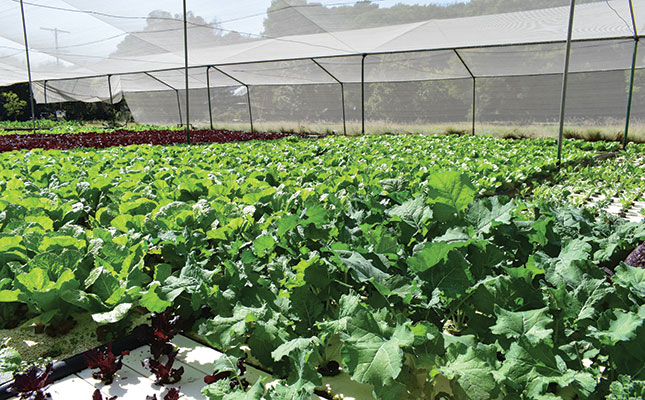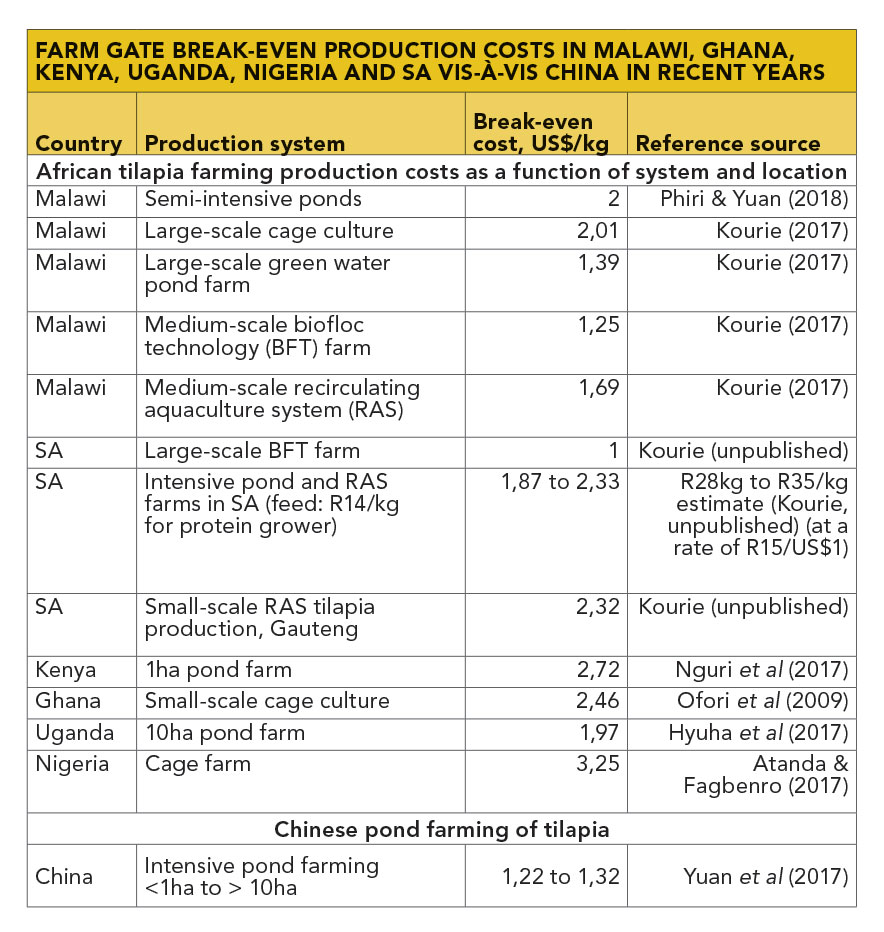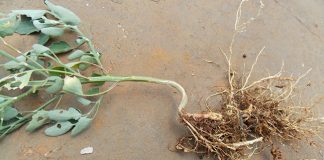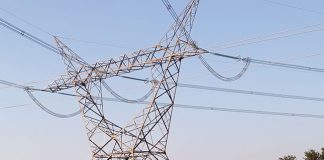
Every day, the agriculture sector is challenged to produce more food while using fewer resources. Many environmental advocates, agricultural researchers and farmers see intensive food production systems that harness the power of water, such as hydroponics and aquaponics, as alternative ways of producing food.
READ Regenerative agriculture: “We learn from pioneers and our own mistakes”
Hydroponics offers a higher calorie and nutrient yield per growing area, and this is one of the reasons the Food and Agriculture Organization of the United Nations supports the implementation of this system in regions where there are food shortages.
Hydroponics is ideal for the intensive production of fresh produce, and enables crops to be grown without soil, using nutrient-fortified water instead.
The plants’ roots are either exposed to the water, or physically supported by an inert medium such as perlite, gravel, coconut coir, or vermiculite. Since the plants are provided with optimal growing conditions, they can develop at a faster rate than those produced under traditional outdoor conditions or conventional methods.
South African vegetable, microgreens and flower producers have realised the potential that a hydroponics system holds, especially in terms of the quality of produce, the fast turn-around time, and the efficient use of water.
Intensive hydroponics systems are highly controlled and data-driven, and are often fully automated. Hydroponics also allows for more elementary systems to be set up in small spaces, enabling small-scale producers to grow food in and out of the traditional seasons in a climate-controlled greenhouse or tunnel.
READ The use of seawater greenhouses in hydroponics
With soil-grown crops, various factors can influence and hinder production; these include soil quality, water availability, water and soil pH, light, air, temperature, soil micro-organisms, and weather conditions.
In a hydroponics system, the growing conditions can be controlled, as the plants are grown in an optimised ecosystem that provides a nutrient-rich water solution containing a mix of macro- and micro-elements.
Benefits of hydroponics production
According to literature and the Agricultural Research Council’s (ARC) Hydroponics Vegetable Production guide, the advantages associated with hydroponics vegetable production include:
- No soil requirement, which makes it an attractive possibility for urban farmers, rooftop producers and gardeners.
- Soil preparation and weeding is reduced or eliminated entirely.
- High yields of vegetables can be produced in a small area.
- All the nutrients and water that the plants need are available at all times.
- Water is used efficiently, as it is recirculated in order to minimise wastage. In conventional practices, water is lost due to evaporation, inefficient irrigation, and poor water management.
- Pollution of the soil with unused nutrients is greatly reduced.
- Plants grow at a faster rate than their soil-bound counterparts because of the controlled environment they are grown in and the availability of nutrients.
- It enables farmers to grow food in desert climates. Scientists are even utilising the technology on the International Space Station to grow food for astronauts.
- Growers don’t have to worry about the changing seasons, as hydroponics systems allow for continuous production. Crops can be grown and harvested year-round, resulting in a continuous supply of fresh produce.
- Hydroponics systems reduce crop-protection applications such as herbicides, and soil-borne diseases can be eliminated.
- The crops need minimal post-harvest washing.

Disadvantages
Although its benefits are considerable, hydroponics agriculture also comes with its own set of challenges and problems, such as:
- It is capital-, labour- and management-intensive.
- It requires a high level of expertise.
- A significant investment in infrastructure is needed for a commercial enterprise. Tunnels or greenhouses need to be erected, and a considerable amount of tubing and containers for the growth media needs to be installed.
- If grow-lights are installed, electricity costs can be high.
- Daily management and monitoring is necessary.
- It requires the use of specially formulated soluble nutrients, which must be sourced.
Other diseases and pests remain a risk.
How to get started
According to the ARC’s guide to Hydroponics Vegetable Production, the following are required to get a hydroponics system up and running:
- Water. A reliable source is important, and the pH level can be adjusted with an over-the-counter solution.
- Oxygen. All plants require oxygen, so it might be necessary to oxygenate the water by means of an air pump and air stones. Another way to ensure the plants receive enough oxygen is to allow for sufficient space between their roots and the water reservoir.
- Root support. This will ensure that the plants have something to grip onto. Vermiculite, perlite, peat moss, gravel, coconut coir, or mineral wool can be used.
- Nutrients. These include minerals and other trace elements. They are dissolved in water and supplied to plants every day. Important macro-elements such as nitrogen, calcium and phosphorus, as well as micro-elements such as magnesium, must be added in specific amounts, according to a particular crop’s needs.
- Light. Plants need light for photosynthesis, and if they are grown indoors, supplementary artificial lighting is required.
The ARC has identified two basic hydroponics principles for the production of vegetables: the gravel-flow or recirculating principle, and the open bag or drain-to-waste principle. In the gravel-flow principle, gravel or sand is often used as a growth medium, while the nutrient solution is recirculated through the system. The roots of the plants stand in a thin layer of the nutrient solution for the duration of production.
In the open-bag principle, plants are grown in containers, and nutrient solutions are supplied to them several times a day by means of a dripper. The number of irrigation cycles per day depends on the temperature, level of evaporation, type of plants, and their growth stages.
Crops grown via the open-bag principle grow tall and need to be trained and pruned so that they grow upwards as a single stem.
Hydroponics systems in a nutshell
There are six main types of hydroponics systems, which can follow either the gravel-flow or open-bag principle. These systems are:
- The wick system: The most elementary system, this is a good one to start with when it comes to choosing a method of hydroponics. The nutrient solution is contained in a reservoir below the plant, and a wick made from rope or similar material is placed in such as way that one end is in the nutrient solution and the other is in the plant container. Through capillary movement, the plant’s roots draw the nutrient-rich water into the grow tray. This system is an excellent option for home gardeners or novice farmers. It is, however, not the best choice for the production of large plants, as the wicks might fail to provide them with sufficient water. The incorrect placement of the wick can result in the plants not receiving enough water and nutrients.
- The deep-water culture system: Here, the nutrient solution is held in a reservoir, and the plants are suspended in the reservoir in deep, well-oxygenated water enriched with nutrients. An air pump and air stones are necessary to provide the plants with oxygen to prevent their roots from drowning in the water. This system is unsuitable for large plants or those with long growing seasons.
- The nutrient film technique system: This is popular in small-scale pipe or tray set-ups, in vertical farming, and with commercial producers. It is a recirculating system that allows for the continuous flow of water and nutrients to the plant and back to the reservoir using a slightly downward-facing tube. Unlike deep-water culture, the plants’ roots are not completely submerged. Plants are placed in net pots containing a growing medium. Individual plants can be harvested or replaced when needed. The system does not require the use of a timer, as the pump runs continuously. However, problems can arise if the pump fails. It is important to keep an eye on the plants’ roots so that they don’t end up clogging the system.
- The ebb-and-flow system: This set-up is also known as the flood-and-drain system. The plants are grown in a substrate, with a nutrient reservoir or sump below. A timer is used to ensure that the nutrient-rich water is pumped through the system, from the reservoir to the growing tray, to temporarily submerge the roots. It is then pumped back through a siphon to the reservoir. The system allows air to circulate around the roots when the nutrient solution level drops. Roots can dry out quickly if the pump or timer fails. The flooding depends on factors that include the size of the plants, the water needs of the specific crop, the temperature, and the plants’ growth stage.
- The drip system: This system is very popular with commercial farmers. It is controlled by a timer, and uses a submersible pump to send the nutrient solution to the plants via drip lines and drippers. In this way, the plants are provided with tiny droplets of water and nutrients. It is relatively inexpensive to install.
- The aeroponics system: Here, the plants are suspended in the air and don’t require a growing medium. A timer is installed to control a spray system that delivers water and nutrients frequently to the roots. The roots are exposed to more oxygen in this system than in some of the others.
What about aquaponics?
Aquaponics is a system of food production in which two worlds meet. The production of fish or other aquatic animals is combined with hydroponics crop production in one symbiotic arrangement. Waste produced by the fish, which can be harmful to them in high concentrations, is filtered out of the system by the plants. At the same time, the plants utilise the nutrients from the waste.
READ How aquaponics can produce top-quality crops and higher yields
The difference between hydroponics and aquaponics systems is that the former uses chemical nutrients to feed the plants, while fish waste forms the source of plant nutrients in aquaponics.
In aquaponics, the needs of the fish must be considered. The use of filters is required in the recirculating water system, and the plants themselves can act as efficient filters. The best produce to grow in this type of system includes spinach, lettuce, herbs, peppers, cucumbers, celery and tomatoes. Microgreens, flowers and succulents can also be grown successfully.
For more information, click on the following links: Hydroponic Vegetable Production , Home Gardens/Vertical Farming, Hydroponics and Aquaponics, or Hydroponics and soil-less system.











